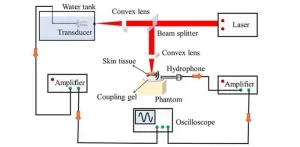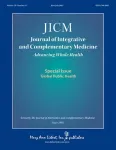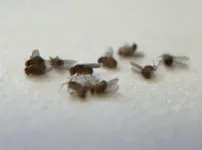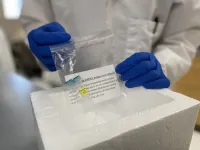(Press-News.org) Researchers have newly discovered a surprising and potentially significant reason why eating foods frequently cooked at high temperatures, such as red meat and deep-fried fare, elevates cancer risk. The alleged culprit: DNA within the food that’s been damaged by the cooking process.
As shown for the first time known to the authors, this study by Stanford scientists and their collaborators at the National Institute of Standards and Technology (NIST), the University of Maryland, and Colorado State University reveals that components of heat-marred DNA can be absorbed during digestion and incorporated into the DNA of the consumer. That uptake directly places damage in the consumer’s DNA, potentially triggering genetic mutations that may eventually lead to cancer and other diseases.
While it’s too soon to say this occurs in humans – the study only observed heat-damaged DNA component uptake and increased DNA injury in lab-grown cells and mice – the findings could have important implications for dietary choices and public health.
“We have shown that cooking can damage DNA in food, and have discovered that consumption of this DNA may be a source of genetic risk,” said study senior author Eric Kool, the George A. and Hilda M. Daubert Professor in Chemistry in the Stanford School of Humanities and Sciences. “Building upon these findings could really change our perceptions of food preparation and food choices.”
Yong Woong Jun, a former postdoctoral research affiliate in chemistry at Stanford and now at the Korea Advanced Institute of Science and Technology, is the lead author of the study, which published June 1 in ACS Central Science.
Novel genetic hazard
Many studies link the consumption of charred and fried foods to DNA damage, and attribute the harm to certain small molecules that form so-called reactive species in the body. Of note, however, those small molecules produced in typical cooking number many thousands of times less than the amount of DNA occurring naturally in foods, Kool says.
For those reactive species to cause DNA damage, they must physically encounter DNA in a cell to trigger a deleterious chemical reaction – a rare event, in all likelihood. In contrast, key components of DNA known as nucleotides that are made available through normal breakdown of biomolecules – for instance, during digestion – are readily incorporated into the DNA of cells, suggesting a plausible and potentially significant pathway for damaged food DNA to inflict damage on other DNA downstream in consumers.
“We don’t doubt that the small molecules identified in prior studies are indeed dangerous,” says Kool. “But what has never been documented before our study is the potentially large quantities of heat-damaged DNA available for uptake into a consumer’s own DNA.”
We are what we eat
Many people aren’t aware that foods we eat – meat, fish, grains, veggies, fruit, mushrooms, you name it – include the originating organisms’ DNA. The oversight is understandable, since DNA does not appear on nutrition labels in the same manner as protein, carbohydrates, fat, vitamins, and minerals. Yet the amounts of devoured DNA are not negligible. For example, a roughly 500 gram (16 ounce) beef steak contains over a gram (0.04 ounce) of cow DNA, suggesting that human exposure to potentially heat-damaged DNA is likewise not negligible.
Investigating the nitty-gritty of how complex DNA molecules are repaired – both after unavoidable natural errors, as well as damage induced by environmental exposures – is a chief aim of Kool’s lab at Stanford. To this end, Kool’s lab and their collaborators have devised means of inducing and measuring specific forms of damage to DNA.
While pursuing this line of research, Kool began wondering about a hypothetical connection to foodborne DNA and the well-known process of the body “salvaging” and reusing DNA scraps. The researchers proceeded to cook foods – namely, ground beef, ground pork, and potatoes – through either 15-minute boils at 100 degrees Celsius (212 degrees Fahrenheit) or 20-minute mild roastings at 220 C (about 430 F). The Stanford researchers then extracted DNA from these foods and sent the samples to collaborators at NIST.
The NIST team, led by Miral Dizdaroglu, showed that all three foods exhibited DNA damage when boiled and roasted, and higher temperatures increased DNA damage in nearly all instances. Interestingly, even just boiling, a relatively low cooking temperature, still resulted in some DNA damage. Other intriguing results emerged as well – potatoes, for instance, incurred less DNA damage at higher temperatures than meat for unknown reasons.
The two most common kinds of damage involved a nucleotide component containing a compound called cytosine changing chemically to a related compound called uracil and the addition of oxygen to another compound called guanine. Both kinds of DNA damage are genotoxic, in that they can ultimately impair gene functioning and foster mutations that cause cells to replicate uncontrollably as cancer.
Next, Kool’s team exposed lab-grown cells and fed mice a solution containing the heat-damaged DNA components in high concentrations. The researchers used an innovative tool, created in-house in Kool’s lab in previous work, that tags sites of damaged DNA with fluorescent molecules, making the extent of the damage easy to measure. Overall, the lab-grown cells showed significant DNA damage resulting from taking up heat-damaged DNA components. As for the mice, DNA damage appeared prominently in the cells lining the small intestine, which makes sense because that’s where much of food digestion takes place.
Meriting further investigation
The team now plans to delve deeper into these eyebrow-raising, preliminary findings. One future avenue of research is testing a broader variety of foods, following up on the idea that foods with high levels of DNA content, such as animal products, could pose more of a potential genetic menace than low-DNA-level sustenance such as potatoes and other plants. The researchers also plan on examining cooking methods that simulate different food preparations – for instance, cooking food for longer than just 20 minutes.
Importantly, the scope of research will need to expand to the long-term, lower doses to heat-damaged DNA expected over decades of consumption in typical human diets, versus the high doses administered in the proof-of-concept study.
“Our study raises a lot of questions about an entirely unexplored, yet possibly substantial chronic health risk from eating foods that are grilled, fried, or otherwise prepared with high heat,” said Kool. “We don’t yet know where these initial findings will lead, and we invite the wider research community to build upon them.”
Kool is also a member of Stanford Bio-X, the Maternal & Child Health Research Institute, the Stanford Cancer Institute, Sarafan ChEM-H, and the Wu Tsai Neurosciences Institute.
Elizabeth Palafox is also a Stanford co-author. Other co-authors include Melis Kant and Pawel Jaruga of the National Institute of Standards and Technology, Erdem Coskun of the National Institute of Standards and Technology and the University of Maryland, and Takamitsu A. Kato of Colorado State University.
The research was funded in part by the U.S. National Cancer Institute and the American Cancer Society.
To read all stories about Stanford science, subscribe to the biweekly Stanford Science Digest.
END
Study in mice links heat-damaged DNA in food to possible genetic risks
2023-06-13
ELSE PRESS RELEASES FROM THIS DATE:
UC Irvine neuroscientists develop ‘meta-cell’ to move Alzheimer’s fight forward
2023-06-13
Irvine, Calif., June 13, 2023 – University of California, Irvine neuroscientists probing the gene changes behind Alzheimer’s disease have developed a process of making a “meta-cell” that overcomes the challenges of studying a single cell. Their technique has already revealed important new information and can be used to study other diseases throughout the body. Details about the meta-cell – created by researchers with the UCI Institute for Memory Impairments and Neurological Disorders, known as UCI MIND – were published in the online journal Cell Press.
Technologies called transcriptomics that study sets of RNA within organisms ...
What’s an underrated way to study decisions? Think out loud
2023-06-13
Think fast: if you’re running a race and overtake the person in second place, what position are you in? Many people instinctively respond that you’re in first place. However, upon reflection, some people realize the correct answer is that you’re now in second place: the former number-two runner slipped into third as you overtook them.
Trick questions of this kind are invaluable to cognitive scientists because they shed light on the cognitive quirks that shape our decision-making. “These aren’t just trick questions,” explained Nick Byrd, a philosopher-scientist and Intelligence Community Fellow who led the research at Stevens ...
Pass the salt: This space rock holds clues as to how Earth got its water
2023-06-13
Sodium chloride, better known as table salt, isn't exactly the type of mineral that captures the imagination of scientists. However, a smattering of tiny salt crystals discovered in a sample from an asteroid has researchers at the University of Arizona Lunar and Planetary Laboratory excited, because these crystals can only have formed in the presence of liquid water.
Even more intriguing, according to the research team, is the fact that the sample comes from an S-type asteroid, a category known to mostly lack hydrated, or water-bearing, minerals. The discovery strongly suggests ...
Understanding tumor microenvironment with photoacoustic spectral analysis
2023-06-13
Tumors are not just isolated clumps of abnormal cells but are associated with more complex system known as the “tumor microenvironment” (TME). Over the past few years, research has revealed that the TME consists of a complex combination of blood vessels, connective tissue, and a matrix of extracellular proteins and molecules. Most importantly, the composition of the TME is different from that of nearby healthy tissues. In particular, the lipid and collagen contents of tumors differ from those of normal tissues, making them important potential biomarkers for diagnosing various types of ...
Special issue of JICM on global public health and the Declaration of Astana
2023-06-13
A special focus issue of the peer-reviewed Journal of Integrative and Complementary Medicine (JICM) on Global Public Health is a response to the Declaration of Astana, developed by the World Health Organization and UNICEF. With contributions from traditional, complementary, and integrative medicine (TCIM) scholars and thought leaders around the world, the issue showcases research and scholarship examining the opportunities and challenges that TCIM approaches offer global health to governments and health service providers seeking to fulfill ...
ASU establishes ʻĀkoʻakoʻa, a new collaborative effort to seed renewed connection between human and coral communities in Hawaiʻi
2023-06-13
With a group of core partners, Arizona State University is creating a new $25 million collaboration to preserve and restore vitality to Hawaiʻi’s coral reefs and the health of its coastlines.
The community-based effort looks to fuse state-of-the-art science programs with the leadership and cultural knowledge of Hawaiʻi’s community partners to enable coastal and reef sustainability for generations to come. Named ʻĀkoʻakoʻa (pronounced ah kō-a kō-a), the effort shares a dual meaning ʻto assemble’ and ‘coral.’
“For ...
Men and women with migraine both carry an increased risk of ischemic stroke
2023-06-13
Women and men who experience migraine headaches also carry an elevated risk of having an ischemic stroke, but women alone may carry an additional risk of heart attack and hemorrhagic stroke, according to a new study led by Cecilia Hvitfeldt Fuglsang of Aarhus University, Denmark publishing June 13th in the open access journal PLOS Medicine.
People diagnosed with migraine are believed to have a higher risk of experiencing a heart attack or stroke before the age of 60. Previous studies have suggested ...
How seeing corpses reduces the lifespan of flies
2023-06-13
Researchers led by Christi Gendron at the University of Michigan, US, have found the link between death perception and reduced aging in flies. Their new study, published June 13th in the open access journal PLOS Biology shows that a specific group of brain cells in the fly, called R2 and R4 neurons, are activated when flies encounter other dead flies, and that this increased activity leads to more rapid aging.
Aging is a complex process that can be affected by both genetics and the environment. While we know that perceptual experiences can affect ...
Study develops primer scheme for human monkeypox virus that can be plugged into currently existing amplicon-based sequencing and bioinformatics infrastructure
2023-06-13
Study develops primer scheme for human monkeypox virus that can be plugged into currently existing amplicon-based sequencing and bioinformatics infrastructure; this approach has enabled public health laboratories to quickly adapt their genomic workflows in response to a newly emerging pathogen.
#####
In your coverage, please use this URL to provide access to the freely available paper in PLOS Biology: http://journals.plos.org/plosbiology/article?id=10.1371/journal.pbio.3002151
Article Title: Development of an amplicon-based sequencing approach in response ...
Key regulator of COVID viral receptor may be new drug target
2023-06-13
Entry of the SARS-CoV-2 virus into human tissues depends on the activity of a host gene that regulates production of a key viral receptor, according to a study publishing June 13th in the open access journal PLOS Biology by Madison Strine and Craig Wilen of Yale University, US, and colleagues. The finding provides important new information on how the virus responsible for COVID-19 causes infection and may lead to new antiviral treatments.
In previous work, the authors identified the gene DYRK1A as critical for SARS-CoV-2 pathogenesis. The gene encodes a kinase, a type of enzyme, and had been previously implicated in regulating cell proliferation ...








